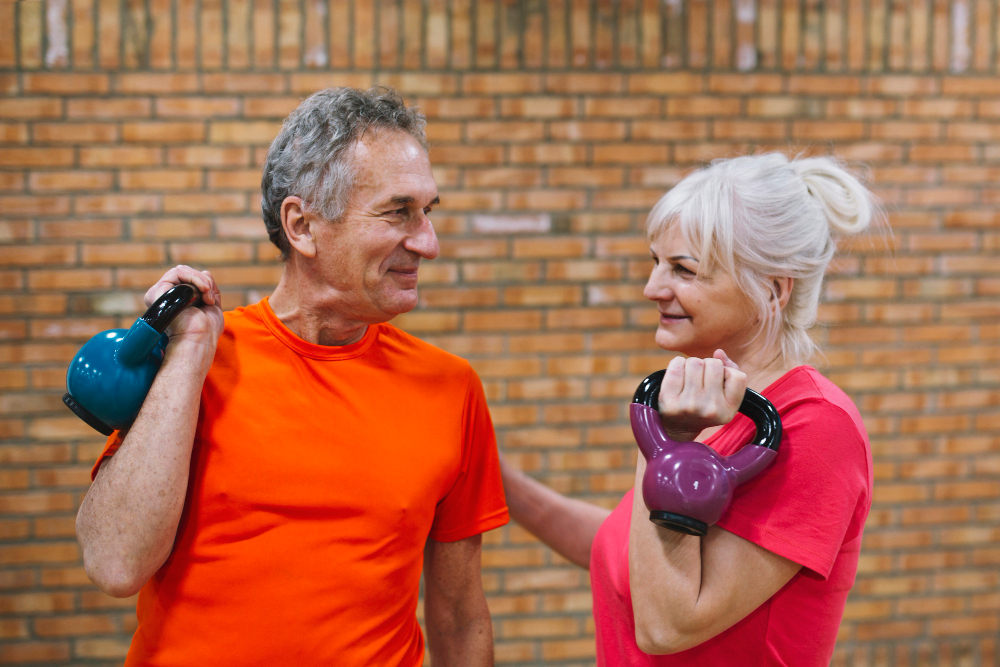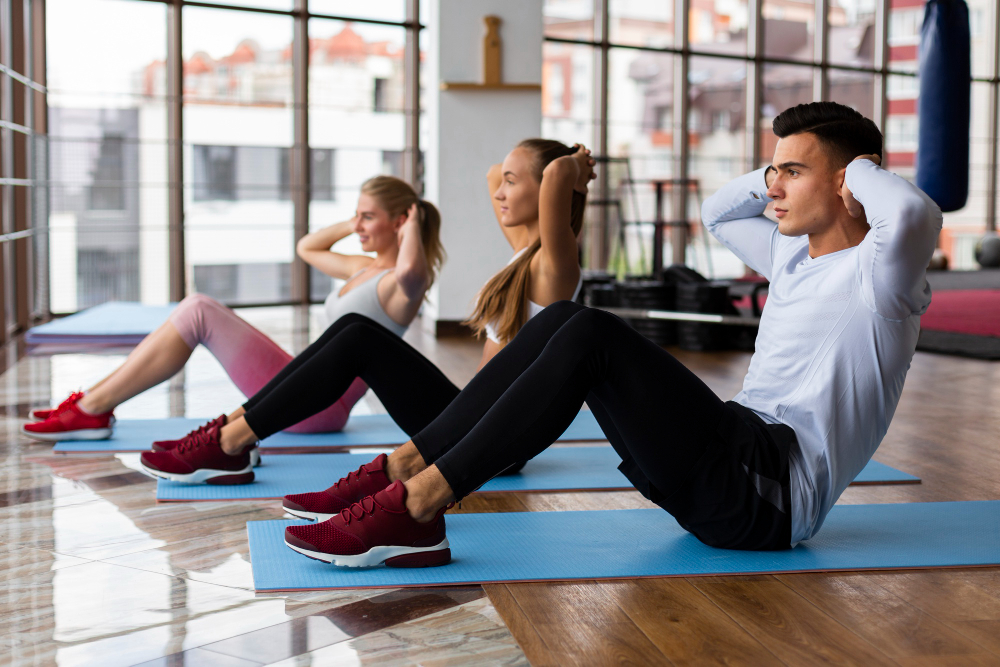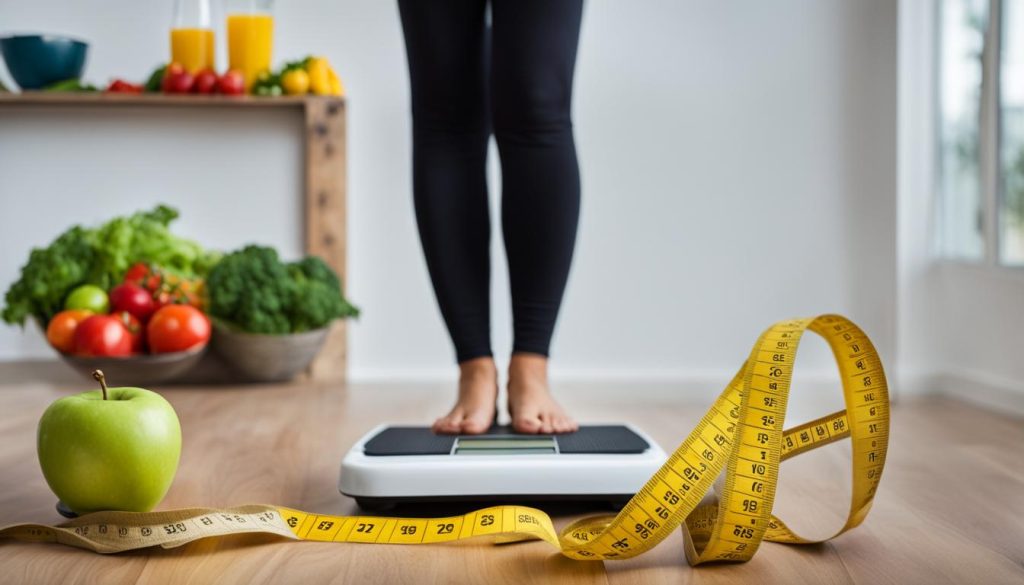In today’s fast-paced world, where the quest for health and wellness is more important than ever, the adage “Age is Just a Number” rings especially true. For seniors seeking to embrace a lifestyle brimming with vitality, understanding the pivotal role of exercise and fitness can transform the golden years into a period of rejuvenation and strength. As we age, our bodies may present new challenges, but with the right approach to physical activity, these years can be some of the most rewarding.
Table of Contents
Whether it’s improving cardiovascular health, enhancing muscle strength, or fostering mental well-being, the benefits of staying active are undeniable. In this article, we’ll explore essential fitness tips for seniors, guiding you through safe and effective strategies to maintain your zest for life. From low-impact aerobic exercises to strength training and flexibility routines, our focus is to empower you with the knowledge to tailor a fitness plan that aligns with your unique needs and goals. Remember, when it comes to your health, age truly is just a number.
Understanding the Importance of Fitness in Later Life
Physical exercise is an essential component of a healthy lifestyle for people of all ages, but it is particularly important for seniors. Regular exercise can play a vital role in combating age-related decline, enhancing overall quality of life, and improving mobility.
Engaging in physical activity can help manage weight, reduce the risk of chronic diseases such as heart disease and diabetes, improve mental health, and even extend lifespan. By incorporating regular physical exercise into their daily routine, seniors can experience a wide range of benefits that contribute to their overall well-being and longevity.
Getting Started with Exercise
It’s crucial for senior citizens to seek guidance from a qualified healthcare provider before embarking on any fitness program. By doing so, they can ensure that their exercise routine is customized to suit their unique health requirements and fitness level, while also minimizing the risk of any potential hazards. This is especially important since seniors may have underlying health issues or physical limitations that need to be taken into account while designing a safe and effective workout plan.
Creating a Balanced Exercise Plan
A well-rounded fitness plan for seniors should include a mix of cardiovascular exercise, strength training, balance exercises, and flexibility activities. This combination helps improve endurance, strength, stability, and range of motion, all of which are important for daily activities and overall health.
1. Cardiovascular Exercise
When it comes to low-impact cardio exercises that are easy on your joints, three of the best options are walking, swimming, and cycling. These exercises are great for strengthening your heart and lungs, burning calories, and improving your overall fitness level. Health authorities recommend that adults aim for at least 150 minutes of moderate-intensity aerobic activity per week to reap these benefits. This can include activities such as brisk walking, leisurely cycling, or swimming laps at a moderate pace. By making regular physical activity a part of your routine, you can boost your health and reduce your risk of chronic diseases such as heart disease, diabetes, and obesity.
- Walking, swimming, and cycling are low-impact cardio exercises that are easy on your joints.
- These exercises are great for strengthening your heart and lungs, burning calories, and improving your overall fitness level.
- Health authorities recommend adults aim for at least 150 minutes of moderate-intensity aerobic activity per week.
- Regular physical activity can reduce your risk of chronic diseases such as heart disease, diabetes, and obesity.
2. Strength Training
As we age, our muscle mass tends to decline naturally. This can lead to a decrease in strength and mobility, making everyday tasks more challenging. To combat this, strength or resistance training is crucial. By incorporating exercises that utilize light weights, resistance bands, or just your own bodyweight, you can help maintain muscle mass and improve overall health.
When it comes to strength training, it’s important to focus on major muscle groups such as the chest, back, legs, and arms. Aim to incorporate these exercises into your routine at least two days per week, giving your muscles time to rest and recover in between sessions.In addition to helping maintain muscle mass, strength training has many other benefits.
It can help improve bone density, boost metabolism, and increase overall fitness levels. So if you want to stay strong, healthy, and active as you age, be sure to make strength training a regular part of your exercise routine.
3. Balance Exercises
One of the most common concerns for seniors is falls, which can lead to serious injuries. To prevent falls, it is important to work on improving balance. There are several effective ways to enhance stability, such as practicing yoga, Tai Chi, and simple standing balance exercises. Yoga is a low-impact exercise that focuses on breathing, stretching, and balance.
Tai Chi, on the other hand, is a gentle form of martial arts that involves slow and controlled movements to improve balance and flexibility. Lastly, simple standing balance exercises can be easily incorporated into daily routines, such as standing on one foot for a few seconds while brushing teeth or waiting in line. By incorporating these balanced-enhancing activities, seniors can reduce their risk of falls and maintain their independence.
4. Flexibility Activities
Incorporating stretching or practicing activities such as yoga into your routine can significantly enhance your overall flexibility, allowing for a greater range of motion in your joints and muscles. This increased flexibility can result in improved performance in physical activities and a reduced risk of injury.
By regularly stretching and performing yoga poses, you can also increase blood flow and circulation throughout your body, promoting relaxation and reducing stress levels. Additionally, stretching helps to improve posture and balance, which can enhance your overall quality of life.
Nutrition and Hydration
Maintaining a healthy and fit body requires more than just exercise. Proper nutrition and hydration are also essential components of a well-rounded fitness routine. It is important to consume a balanced diet that includes a variety of nutrient-dense foods such as fresh fruits, vegetables, lean proteins, and whole grains. These foods provide the necessary vitamins, minerals, and fiber that support energy levels and facilitate recovery from exercise.
For seniors, it’s especially important to ensure adequate hydration before, during, and after exercise to prevent dehydration and support overall health. Proper hydration helps regulate body temperature, lubricate joints, and transport nutrients throughout the body. Seniors should aim to drink at least 8 cups of water a day and increase their intake on days when they are more active.
In summary, a balanced diet rich in whole foods and adequate hydration are critical to maintaining fitness and overall health, especially as we age. By incorporating these healthy habits into our daily routine, we can enjoy the benefits of a strong and healthy body for years to come.
Overcoming Common Barriers
Many seniors face obstacles to regular exercise, including fear of injury, lack of motivation, or physical limitations. Overcoming these barriers may involve starting slow, finding enjoyable activities, and seeking support from fitness professionals or groups tailored to older adults.
Safety First
Safety is paramount when exercising at any age. Seniors should focus on proper form, start with lower intensity, and gradually increase the difficulty of exercises to prevent injuries. Listening to one’s body and stopping any activity that causes pain or discomfort is crucial.
Staying Motivated
Maintaining motivation can be challenging, but setting realistic goals, tracking progress, and engaging in social activities like group exercise can help keep seniors inspired and committed to their fitness journey.
Technology and Fitness
In today’s digital age, technology can be a valuable tool in staying fit. Fitness trackers, mobile apps, and online exercise programs can provide guidance, track progress, and offer a sense of community.
Conclusion
Age should never be a barrier to living a healthy and active lifestyle. With the right approach, seniors can enjoy the myriad benefits of fitness, from improved physical health to enhanced mental well-being. By incorporating regular exercise, focusing on nutrition, and addressing safety and motivation, seniors can thrive at any age.
Remember, it’s never too late to start on the path to better health and fitness. Embrace the journey, and let the mantra “Age is just a number” be your guide to a more active, healthier life.








